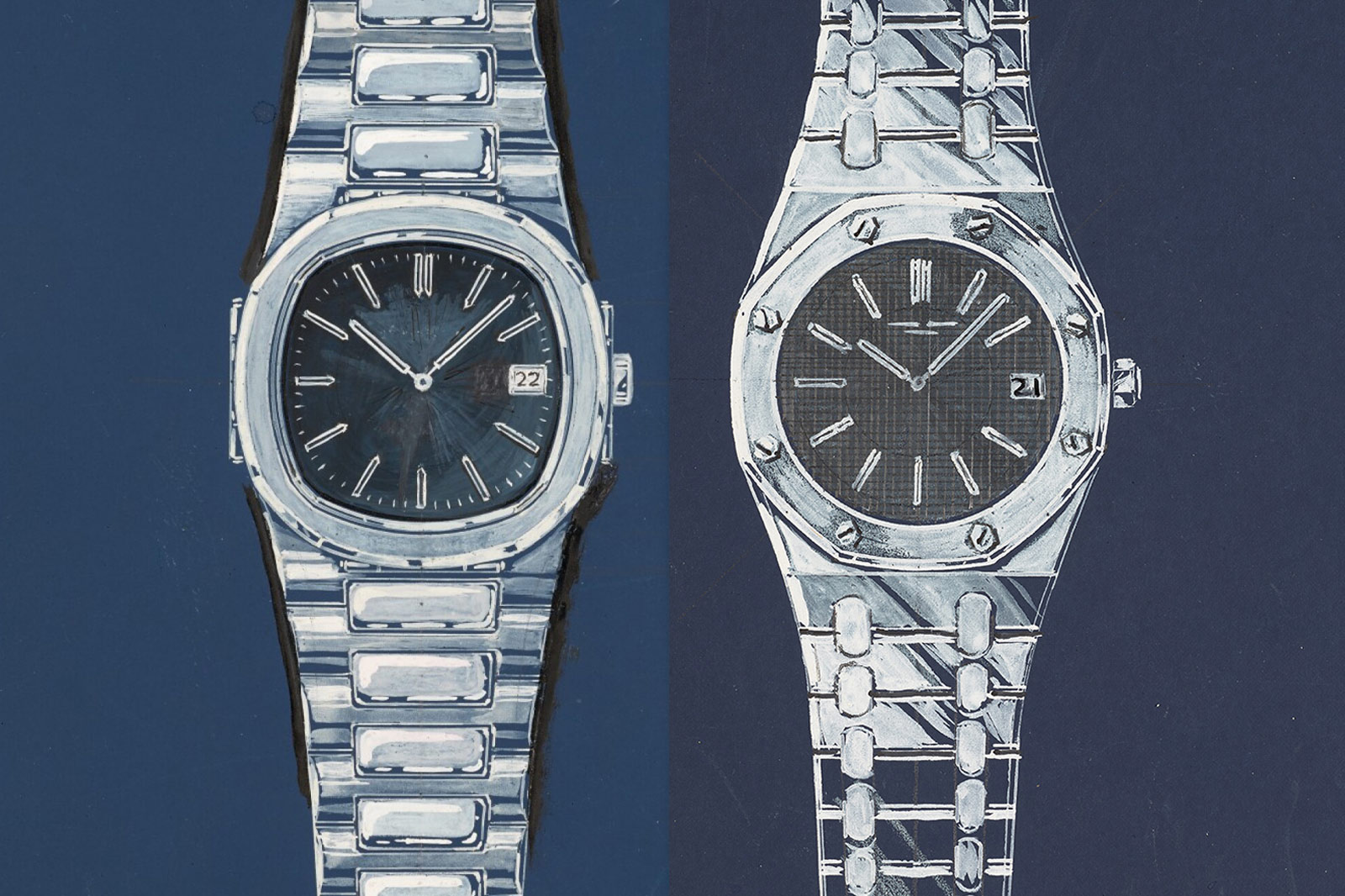
Since haute horology’s post-lockdown, social-media driven graduation from relatively niche interest to mainstream cultural zeitgeist stalwart – joining the ranks of art, cars, sneakers and handbags – ‘sports luxe’ watches have emerged as a (if not, the) standout favourite.
Whilst no formal definition exists, the general consensus as to what comprises a ‘sports luxe’ wristwatch is fundamentally: an almost-industrial integrated case and bracelet design with sleek, bold lines in (conventionally) stainless steel. One should not be able to tell where the design for the case ends and where the design for the bracelet begins when it comes to a true sports luxe piece, possessing a seamless and harmoniously silhouette tracing from case into bracelet as a singularly conceived and executed item. A decent level of water resistance, a self-winding movement as well as contrasting polished and brushed case/bracelet finishing can also be observed as hallmarks across almost all its members.
As I’m sure Oracle Time readers are already well aware – founders of the ‘sports luxe’ pack come in the form of Audemars Piguet’s Royal Oak from 1972 and Patek Philippe’s Nautilus from 1976; both designed by Gerald Genta. Genta’s designs reflected their era’s ongoing shifts in specific social attitudes and activity. The preceding ‘Jet Age’ meant that those wealthy enough could easily and conveniently travel the world and enjoy all it had to offer. Think of Slim Aarons’ photographs and ‘playboys’ the like of Gianni Agnelli, Porfirio Rubirosa and Gunter Sachs.
This new breed of Maserati Merak driving, Riva Aquarama piloting, on-the-go international playboy needed a watch that could keep up with their fast-living lifestyle. From sunbathing in Cannes to skiing in Gstaad and dinner in Rome, the newly minted sports luxe watch was the timekeeping companion the jet-set needed. Capable of surviving to everything la dolce vita could throw at them whilst maintaining their requisite, louche house style.
AP Royal Oak design sketch
Design language in general was also evolving during the 1970s. After the cultural revolution that was the ‘swinging 60s’, design and expression across-the-board became more egalitarian, more pragmatic, more bold, more ‘fun’. A prime example of this is the Pompidou Centre (1971-77) with its plumbing, wiring and ventilation decoratively laid bare on its exterior. One can draw parallels to the Royal Oak, with its exposed screws. Ironically, the bezel ‘screw heads’ are a purely aesthetic choice being non-functional and made of gold. The use of a utilitarian material like stainless steel was something of a provocation too.
Until the Royal Oak, luxury in watchmaking pretty much comprised of only smaller pieces realised in precious metals. The appearance of a large and uncompromising luxury steel watch, not to mention its astronomical price point, was hitherto unheard of. So much so that Audemars Piguet didn’t even posses tooling for work with stainless steel at the time of the RO’s initial development, so initial Royal Oak prototypes were in fact white gold masquerading as steel.
Audemars Piguet Royal Oak Ref. 5402
Looking beyond sports luxe’s 70’s rivera-dwelling credentials, the reason for the sector’s current and still-rising level of popularity with today’s layman watch enthusiast can perhaps be partly arbitrated to the fact ‘athelesiure’ in general has grown to become a practical and aesthetic mainstay throughout fashionable circles. One need only look to flagship mainstream luxury brands, the like of Chanel, Louis Vuitton and Dior, to observe ‘cruise collection’ styling seeping into everyday wear.
Alongside the influence from moves in cultural taste that still define fashions to this day, the ‘sports luxe’ watch was conceived as something of a “Hail Mary pass”. It came from an industry in crisis, the rise of quartz movements (not to mention a global economic crisis coupled with a then divided, antiquated Swiss watch industry) meant the grand old houses of horology were forced to adapt and find their place in a brave new world. And did they get it right.
With looks as relevant and modern today as at their debut, the now quinqu/quadragenarian Royal Oak and Nautilus have subsequently spawned countless other watches echoing the blueprint Genta laid out in them. From A. Lange & Sohne’s Odysseus to Zenith’s Defy there is no doubt that watch world is now completely smitten with sports luxe.
Oracle Time